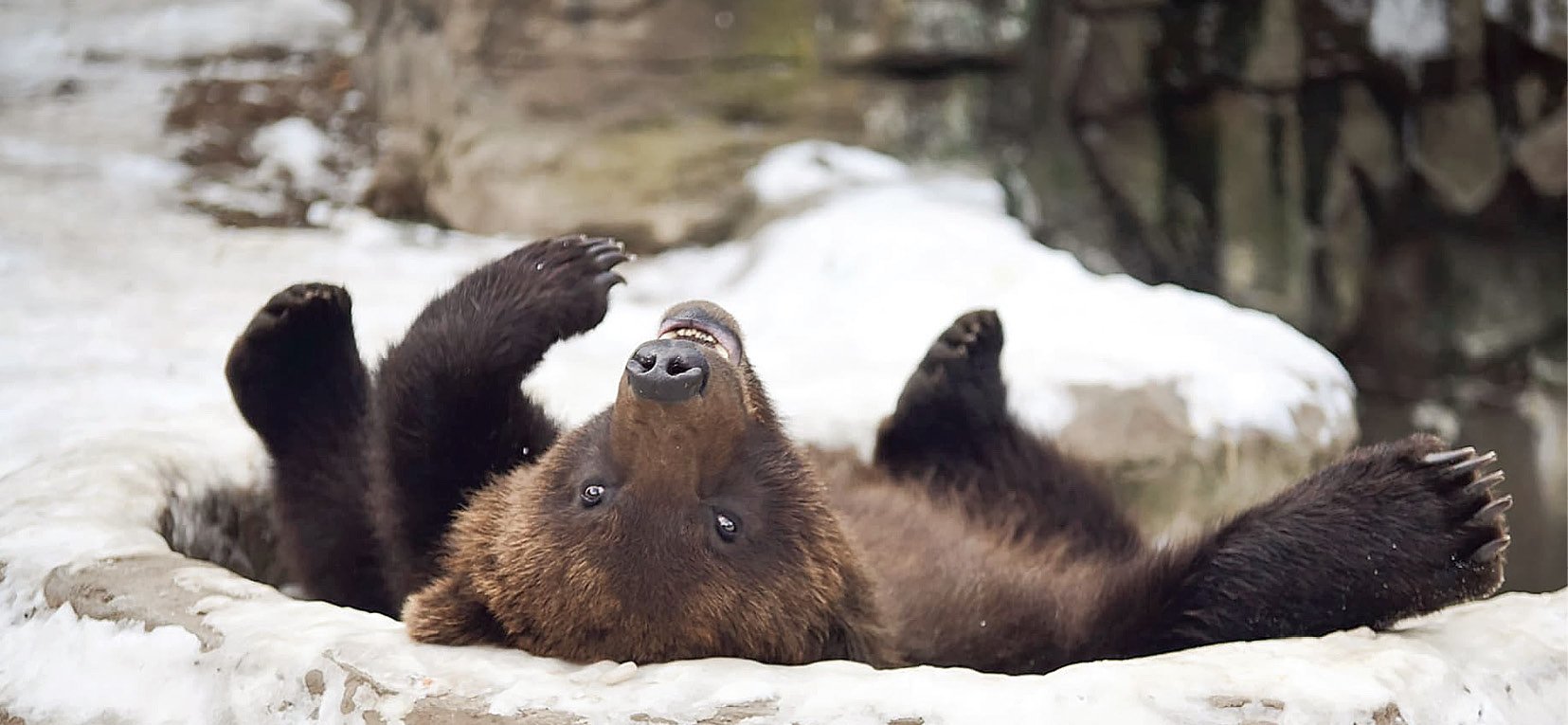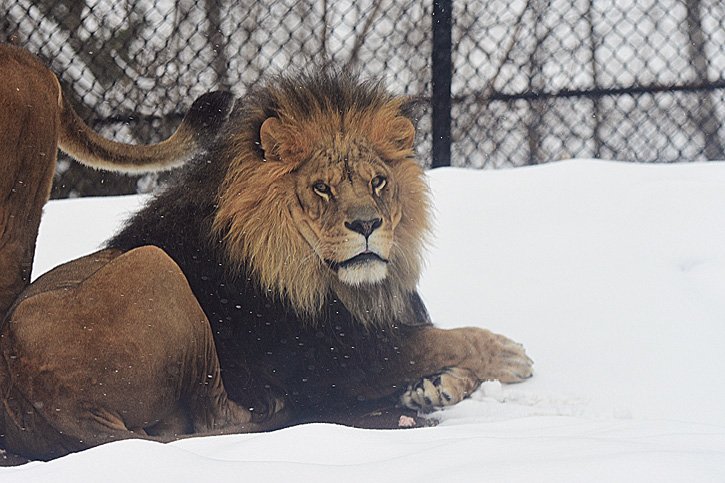There is a lot going on at the Lake Superior Zoo (LSZ) in Duluth this fall and winter.
Not only does the LSZ have a brand-new winter event in the works—The Lake Superior Zoo presents Larger than Life Lights—that will feature six giant animal inflatables, holiday lights and more, but fall is also the time of year that the zoo transitions from summer to winter care and programming.
And there is a lot that goes into winterizing the grounds and exhibits of the nation’s 19th oldest zoo.
“As most people know, winters can be quite extreme up here,” says Emily Perala, lead zookeeper at the LSZ. “That being said, the visitor’s experience is very similar in the winter as it is in the summer months, with the caveat that some folks may not spend quite as much time outside because of the cold.”
“Almost all of our animals that have outdoor exhibits are from climates similar to ours,” continues Perala, “so they are well acclimated to our winters and can stay visible in their habitats year-round. The train doesn’t run in the winter and our hoof-stock contact yard is closed until Memorial Day, but with the exception of the kangaroo and wallaby yard, all of our outdoor habitats are open year-round.”
To prepare the grounds for the winter, Perala and the rest of the LSZ team set out animal-safe salt buckets and shovels to keep walkways clear when the snow falls, they winterize all of their equipment and exposed waterlines and reservoirs, and do their last major clean on all of the outdoor animal pools and rockwork for the season.
They set out heated water bowls for the few animals that can have them, turn on the heated rocks for the “big cats” (something that Perala compares to in-floor heating in a house) and add straw beds to the habitats and bedroom areas so they have “nice cozy places to rest,” and generally start paying close attention to the daily highs and lows to determine which animals can safely go outside.
“We also have to closely monitor indoor temperatures,” says Perala, “adjusting thermostats and individual heat lamps in basking areas depending on temperature fluctuations caused by outdoor temps.”
Needless to say, a lot of hard work goes into preparing a zoo for winter on the North Shore. However, it is not just in the fall that Perala has a lot on her plate.
“A big part of my job,” says Perala, “is to work in all the different animal areas to fill in for staff and help the other zookeepers with their projects and goals.”

“I help foster communication between the keepers and the director of animal management, and just generally keep things running smoothly,” continues Perala. “I’m also in charge of our animal care internship program that helps educate aspiring students by setting them up with the tools that they need to become successful zookeepers. And as the enrichment coordinator, I work closely with the training and welfare coordinators to make sure that the animals are healthy and are receiving the best possible care.”
As is the case with most zookeepers, Perala’s path took a number of unique twists and turns before launching her on a career as a zookeeper.
To get to where she is today, Perala interned with large and small animal vets, a humane officer, a wildlife rehabilitator, and at a big cat and bear sanctuary before landing her first zookeeping job at the Dallas Zoo in the primate, tiger and otter section. Perala has now been a zookeeper for 11½ years, and will have been at the Lake Superior Zoo for nine years this November.
Perala discovered her love for animals at a young age while showing a variety of animals for 4-H that ranged from cats and rabbits to horses. It is this passion for working with animals and inspiring the next generation of zookeepers that continues to motivate her in her work at the LSZ.
“My favorite part about zookeeping,” says Perala, “is building relationships with the animals. They have a way of making you feel good, and they are so entertaining, though they can be stubborn and difficult at times just like the rest of us.”
“Training and enrichment are my two favorite aspects of the job,” continues Perala. “The ‘lightbulb’ moment with training is especially rewarding, when you can see that you had a breakthrough in communication and you and the animal are now an even better team.”
Despite the cold, winter is a great time to visit the Lake Superior Zoo. The new Larger than Life Lights event will begin on Friday, Nov. 26 and then continues Thurs.-Sun. (except Christmas Eve and Day) from 6-9 p.m., with the annual holiday membership drive running Nov. 26-Dec. 31.
I mean, where else can you see a lion lounging in the snow in our region other than at the Duluth Lake Superior Zoo?
For more information, be sure to visit the LSZ website at: lszooduluth.org.






